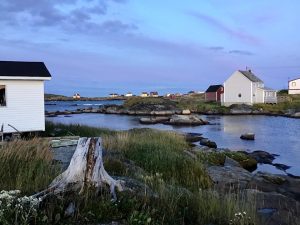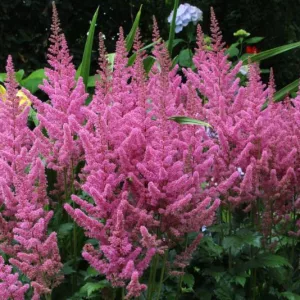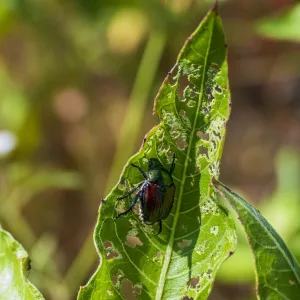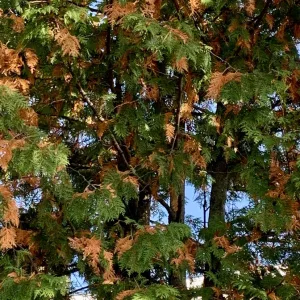I had a wonderful vacation exploring part of Newfoundland in early September. That trip had been on our bucket list for quite a while. My husband and I have an interesting dynamic when we travel. He works for a power company so is always looking up at power lines. I am always looking down at trees, shrubs, flowers and gardens.
I now know why they call that part of Canada ‘The Rock’. The topsoil is very shallow and in most areas we visited, rock was more prevalent than ground. The result is a very different landscape than the one we are used to here in Algoma. I didn’t see a single oak tree or pine. Spruce, balsam, larch, poplar and birch are the native there. All are quite a bit shorter than we see here as they are blasted by so much wind!
I didn’t see a lot of landscaping around houses or much in the way of annual planting until we hit the St. John’s area. However, I want to stress that I am in no way being critical. It was an extremely beautiful province to visit with a unique landscape that was fascinating.
As a gardener though, the trip really made me appreciate the area where I live. I do have challenges with sand and extremely well drained soil. Many people in this area also deal with heavy clay. However both sandy and clay soil can be amended so that a wide variety of plants thrive. You can’t do much with solid rock!
Every fall I make a point of enriching the soil in my vegetable garden once the harvest is complete. I add a generous amount of organic compost, turn it into open areas and top dress along my asparagus row. Then I add about one pound of lime per hundred square feet of garden area to counteract the acidity caused by falling oak leaves and pine needles.
In my perennial gardens, I add compost each spring because I leave foliage to die down in fall, allowing it to collapse into the garden. I like the extra insulation it provides over the winter as well as the habitat it provides for native pollinating insects. Once snow melts in April, I clean up all the debris, add compost and plants are good to go.
Amending your garden soil can be done either spring or fall. Just pick the time that suits your schedule and garden routine the best. If you are adding compost or topping up gardens with soil, be sure to be very careful around existing trees, shrubs and perennials. They aren’t too tolerant of soil being heaped up on trunks, stems or crowns. Moist soil or compost can rot bark and the crowns of perennial plants.
Just a reminder not to add lime to plants you grow that thrive in acidic soil. (blueberries, rhododendrons, azaleas and hydrangea varieties that can have either pink or blue flowers depending on soil acidity) These plants would benefit from peat moss added to the garden around them or a top dressing of pine needles. Both will help keep the soil acidic.
I often get calls in the fall about customers concerned that their pine tree is dying. A few questions asked determines that two year old needles are turning yellow and falling off. That is the normal cycle for all pines.
If you happen to know someone with a pine tree in their yard and you need mulch for your acid loving plants, I’m sure they would be happy to have you come and take away all those needles! I certainly have an over abundance from the huge white pines in my side and back gardens.




